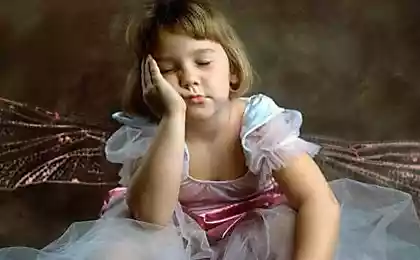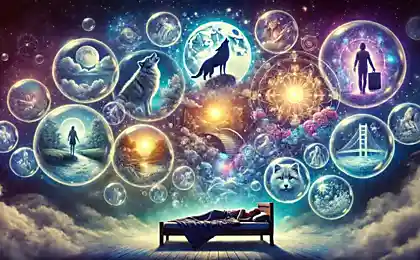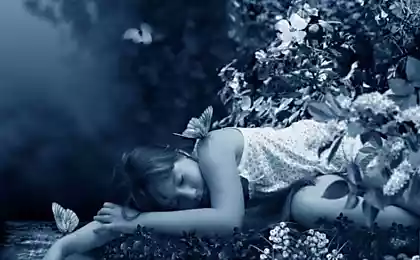1050
Quit smoking see vivid dreams about smoking
Quit smoking see vivid dreams about smoking

"33 percent of the 239 smokers who refrain from smoking from 1 to 4 weeks, said that he saw at least one dream about smoking. In most cases, they saw themselves as smokers and tested with the negative emotions - anxiety or guilt. According to experts, the dreams about smoking were the result of rejecting it in real life, because before that smokers have not seen these dreams, with the frequency of such dreams depended on how long a person smokes. It is important to note that the dreams were as similar in different people as the main symptoms of abstinence from smoking. " (From an article in the Journal of Abnormal Psychology) external stimuli affect the dreams

With such a phenomenon experienced by most of us, we sleep, we hear some sound from the real world and it is poured into our dream. This is called merging of dream and reality. A similar example (although it's more internal influence than external) - when the body is thirsty, and the brain moves the feeling to sleep. You can drink a glass of water in a dream, and for a while to get rid of thirst, but soon the body will remind her again. This dream could be repeated several times, until you wake up and do not quench your thirst in reality. This concept reflects pictured above picture of Salvador Dali "Dream caused by the flight of a bee around a pomegranate a second before awakening».
3. Blind people have dreams
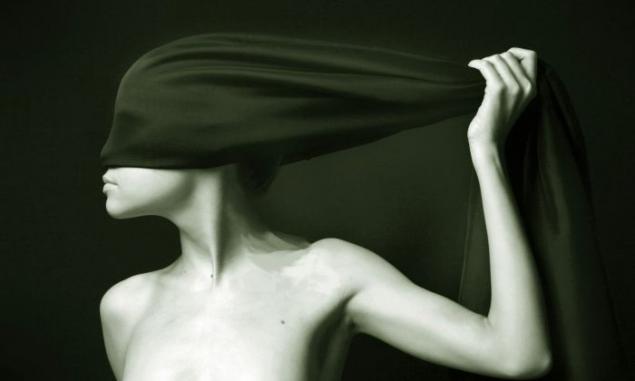
People who have lost their sight after birth, can dream about a variety of images. Blind from birth do not see the images, but their dreams are no less bright, but they are based on other senses: hearing, smell, tactile sensations and emotions. Sighted person it's hard to imagine, but the body is so badly in need of sleep, which is able to virtually manage their physical condition so that it seemed real.
4. We forget about 90% of their dreams

Within five minutes of waking forgotten half of our dreams. Within ten minutes the forgotten 90%. Famous poet Taylor Coleridge once had a fantastic dream (probably due to opium). He grabbed a pen and paper and began to describe "a vision in a dream" from which came one of the most famous English poems - "Kubla Khan." While writing this piece (via line 54), the author had to escape. When Coleridge returned to writing poems, he could not remember the rest of the dream, and the poem was left unfinished.
In a country blessed Xanadu
Kubla Khan Palace built,
Where Alf runs, the sacred stream,
Through a haze of giant caves, foam,
It flows into the sleepy ocean.
Curiously, the idea of Robert Louis Stevenson tale of Dr. Jekyll and Mr. Hyde came in a dream, as well as Mary Shelley - Frankenstein image.
5. All dreaming

All people have dreams (except in cases of severe mental disorders), but men and women have different dreams and different physical reactions. Men are usually photographed with another man, while women - and men and women with equal frequency. In addition, both sexes are experiencing physiological responses of a sexual nature, regardless of whether sleep actually erotic or not: both men and women increases blood flow to the genitals.
6. Dreams prevent mental disorders
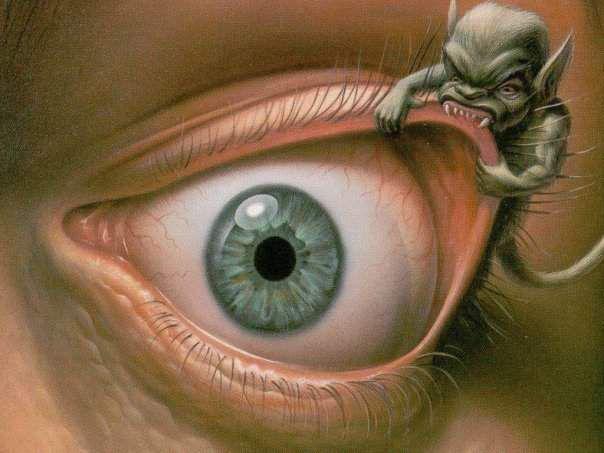
In a recent study, it was observed that all the subjects, which awakened in the beginning of each dream, but allowed to sleep for eight hours, have difficulty concentrating, were irritable, experiencing hallucinations, and showed signs of mental disorder after only three days of experience. When the subjects are no longer wake up during REM sleep, the brain began to make up for their missed earlier phase of dreams due to a significant increase in their duration.
7. We dream only what we know

Our dreams are frequently full of strangers who play certain roles. Did you know that these people are not thought up your brain - this is a person of real people whom you once saw, but could just forget? A terrible murderer nightmare from your past may actually be the guy who poured petrol into the car of your father during your childhood. Throughout life, we see hundreds of thousands of people, so that we have an infinite set of individuals who could use our brains during dreams.
8. Not all people see colorful dreams

About 12 percent of the dreams we see in black and white. The rest of the dreams we see in color. Also, people tend to see similar dreams, the plot of which is education, escape from persecution, jogging or running on the spot, the scene of an erotic nature, fall, late, seeing dead people who are actually alive, loss of teeth, flying, failure in the exam or a car accident. However, it remains unknown whether a more pronounced emotional dreams associated with violence or death in people who see colorful dreams, compared with those whose dreams are devoid of color.
9. Dreams should not be taken literally
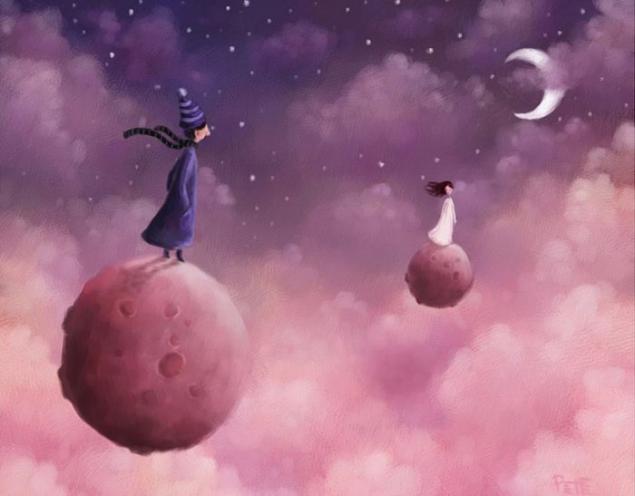
If you dream of something concrete, often dream really do not know. The dreams speak to us in the language of symbols. Being unconscious, our mind tries to assimilate the images from dreams to something well known to us. It's like a poetic work compare with ants moving without stopping the machine. But no one compares the object or phenomenon with itself, for example: "This beautiful sunset was like a beautiful sunset." So, whatever your dream, do not take it literally.
10. During sleep, your body is paralyzed

Believe it or not, but when you sleep, your body is virtually paralyzed - most likely, it prevents the fulfillment of unaccountable actions that could harm us. If you believe an article on Wikipedia dreams, "glands start to produce a special hormone that induces sleep and neurons send signals to the spinal cord, which reduces muscle activity and then virtually paralyze the body».
A few more facts:
1. When you snore, you do not see dreams.
2. Children up to about three years, do not dream about themselves. At about this age and 7-8 years before they see more nightmares than adults.
3. If you wake up during REM sleep, you are likely to remember the dream more vivid than after sleep through the whole night.

"33 percent of the 239 smokers who refrain from smoking from 1 to 4 weeks, said that he saw at least one dream about smoking. In most cases, they saw themselves as smokers and tested with the negative emotions - anxiety or guilt. According to experts, the dreams about smoking were the result of rejecting it in real life, because before that smokers have not seen these dreams, with the frequency of such dreams depended on how long a person smokes. It is important to note that the dreams were as similar in different people as the main symptoms of abstinence from smoking. " (From an article in the Journal of Abnormal Psychology) external stimuli affect the dreams

With such a phenomenon experienced by most of us, we sleep, we hear some sound from the real world and it is poured into our dream. This is called merging of dream and reality. A similar example (although it's more internal influence than external) - when the body is thirsty, and the brain moves the feeling to sleep. You can drink a glass of water in a dream, and for a while to get rid of thirst, but soon the body will remind her again. This dream could be repeated several times, until you wake up and do not quench your thirst in reality. This concept reflects pictured above picture of Salvador Dali "Dream caused by the flight of a bee around a pomegranate a second before awakening».
3. Blind people have dreams

People who have lost their sight after birth, can dream about a variety of images. Blind from birth do not see the images, but their dreams are no less bright, but they are based on other senses: hearing, smell, tactile sensations and emotions. Sighted person it's hard to imagine, but the body is so badly in need of sleep, which is able to virtually manage their physical condition so that it seemed real.
4. We forget about 90% of their dreams

Within five minutes of waking forgotten half of our dreams. Within ten minutes the forgotten 90%. Famous poet Taylor Coleridge once had a fantastic dream (probably due to opium). He grabbed a pen and paper and began to describe "a vision in a dream" from which came one of the most famous English poems - "Kubla Khan." While writing this piece (via line 54), the author had to escape. When Coleridge returned to writing poems, he could not remember the rest of the dream, and the poem was left unfinished.
In a country blessed Xanadu
Kubla Khan Palace built,
Where Alf runs, the sacred stream,
Through a haze of giant caves, foam,
It flows into the sleepy ocean.
Curiously, the idea of Robert Louis Stevenson tale of Dr. Jekyll and Mr. Hyde came in a dream, as well as Mary Shelley - Frankenstein image.
5. All dreaming

All people have dreams (except in cases of severe mental disorders), but men and women have different dreams and different physical reactions. Men are usually photographed with another man, while women - and men and women with equal frequency. In addition, both sexes are experiencing physiological responses of a sexual nature, regardless of whether sleep actually erotic or not: both men and women increases blood flow to the genitals.
6. Dreams prevent mental disorders

In a recent study, it was observed that all the subjects, which awakened in the beginning of each dream, but allowed to sleep for eight hours, have difficulty concentrating, were irritable, experiencing hallucinations, and showed signs of mental disorder after only three days of experience. When the subjects are no longer wake up during REM sleep, the brain began to make up for their missed earlier phase of dreams due to a significant increase in their duration.
7. We dream only what we know

Our dreams are frequently full of strangers who play certain roles. Did you know that these people are not thought up your brain - this is a person of real people whom you once saw, but could just forget? A terrible murderer nightmare from your past may actually be the guy who poured petrol into the car of your father during your childhood. Throughout life, we see hundreds of thousands of people, so that we have an infinite set of individuals who could use our brains during dreams.
8. Not all people see colorful dreams

About 12 percent of the dreams we see in black and white. The rest of the dreams we see in color. Also, people tend to see similar dreams, the plot of which is education, escape from persecution, jogging or running on the spot, the scene of an erotic nature, fall, late, seeing dead people who are actually alive, loss of teeth, flying, failure in the exam or a car accident. However, it remains unknown whether a more pronounced emotional dreams associated with violence or death in people who see colorful dreams, compared with those whose dreams are devoid of color.
9. Dreams should not be taken literally

If you dream of something concrete, often dream really do not know. The dreams speak to us in the language of symbols. Being unconscious, our mind tries to assimilate the images from dreams to something well known to us. It's like a poetic work compare with ants moving without stopping the machine. But no one compares the object or phenomenon with itself, for example: "This beautiful sunset was like a beautiful sunset." So, whatever your dream, do not take it literally.
10. During sleep, your body is paralyzed

Believe it or not, but when you sleep, your body is virtually paralyzed - most likely, it prevents the fulfillment of unaccountable actions that could harm us. If you believe an article on Wikipedia dreams, "glands start to produce a special hormone that induces sleep and neurons send signals to the spinal cord, which reduces muscle activity and then virtually paralyze the body».
A few more facts:
1. When you snore, you do not see dreams.
2. Children up to about three years, do not dream about themselves. At about this age and 7-8 years before they see more nightmares than adults.
3. If you wake up during REM sleep, you are likely to remember the dream more vivid than after sleep through the whole night.






